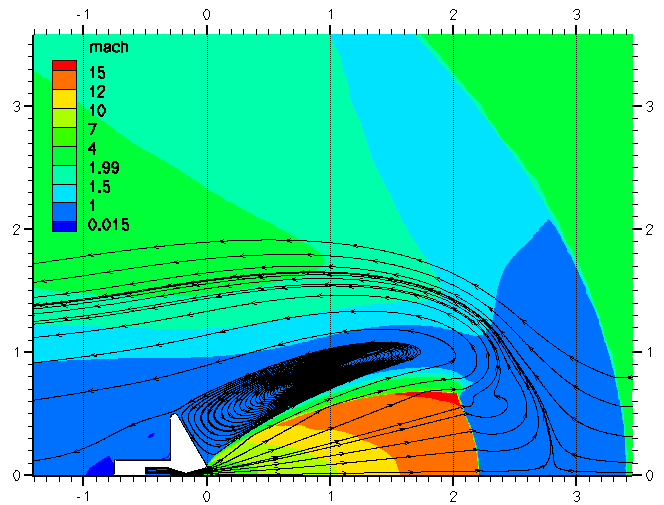Application #19. Supersonic Retro-Propulsion
Simulation of a late 1960s Jarvinen and Adams wind tunnel entry in support of the Entry Technology Development Program.

Mach 2 flow from the right forms a bow shock around the wind tunnel model (in white), which is firing an air jet into the oncoming flow as a means to decelerate during atmospheric entry. Jet entrainment causes a large, annular recirculation region to engulf the entire forebody and, combined with the plume, creates a large effective body size—see the dividing streamline between the jet flow and the post-bowshock flow. The balance between the jet terminal shock, the intermediate stagnation point, and the bow shock is very sensitive to grid resolution. Additionally, the overall shear-layer/barrel-shock/plume structure is highly dependent on the turbulence model (SST in this case).
Thanks to GridEx (coupled with the AFLR grid generator), the refine grid adaptation package, and the NAS facility, time from CAD geometry to solution is typically under a day for this complex flow.
Simulations performed by Bil Kleb and Jan Renee-Carlson of NASA Langley and Ashley Korzun and Chris Cordell of Georgia Tech.
NASA Official: David P. Lockard
Contact: FUN3D-support@lists.nasa.gov
Page Last Modified: 2026-01-16 12:03:13 -0500
NASA Privacy Statement
Accessibility
This material is declared a work of the U.S. Government and is not subject to copyright protection in the United States.

